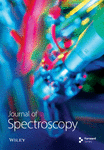Interaction between Plectranthus barbatus herbal tea components and human serum albumin and lysozyme: Binding and activity studies
Abstract
Anti-cholinesterase and antioxidant active constituents of Plectranthus barbatus aqueous extract were found in plasma of rats after its administration – rosmarinic acid, luteolin and apigenin. The aim of the present work is to determine if the extract components can interact with human plasma proteins, namely albumin and lysozyme. Protein intrinsic fluorescence analysis showed that the plant phenolic compounds may bind to albumin, the main transport protein in plasma, and to lysozyme. The estimated thermodynamic parameters suggest that the main intermolecular interaction is hydrophobic association. FTIR analysis of the protein amide bands showed that the plant extract components do not alter the secondary structure of either albumin or lysozyme, however the rate of hydrogen–deuterium exchange suggests that tertiary structure changes might have occurred. An increase of hydrogen deuterium exchange suggests that rosmarinic acid may bind to the fatty acid binding sites in albumin, while luteolin and apigenin may bind to the drug binding sites. The plant extract components also inhibit lysozyme activity with IC50 values around 100 μM. Therefore P. barbatus herbal tea, rosmarinic acid, luteolin and apigenin interact and may be transported by albumin and lysozyme. The inhibition of lysozyme activity may be an additional mechanism for its anti-inflammatory activity.




